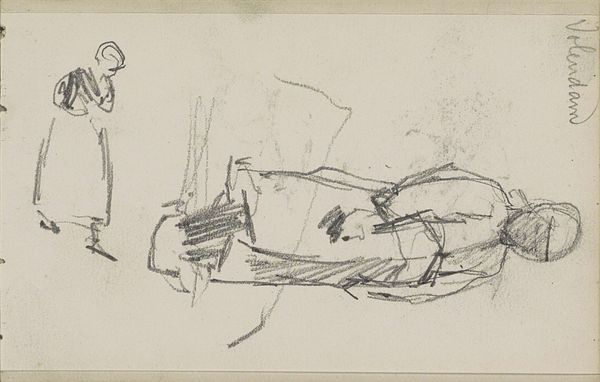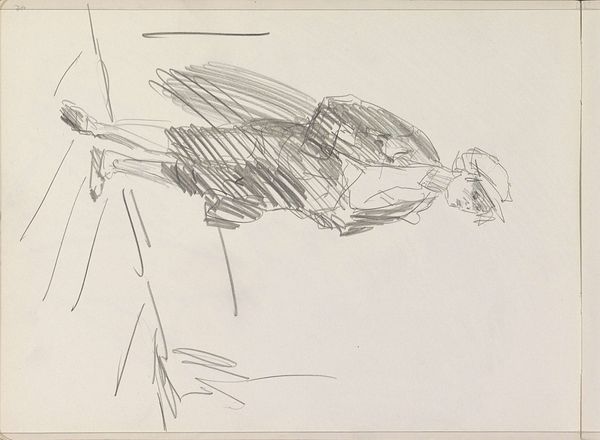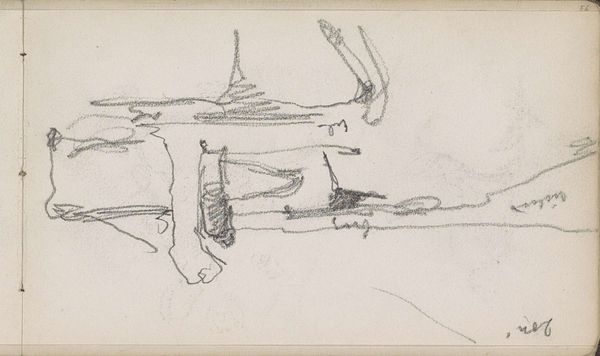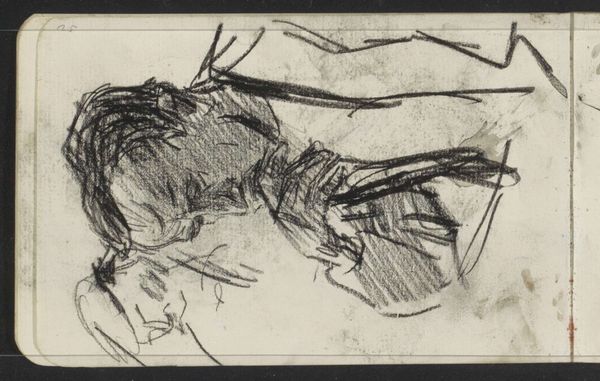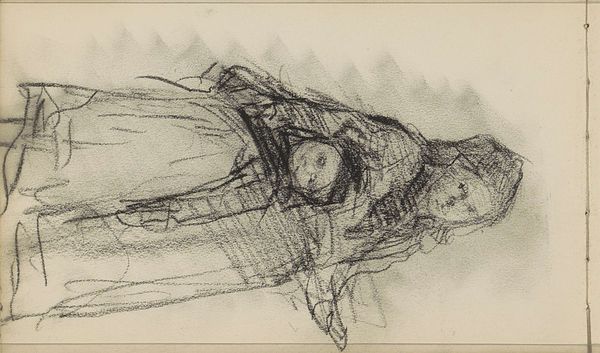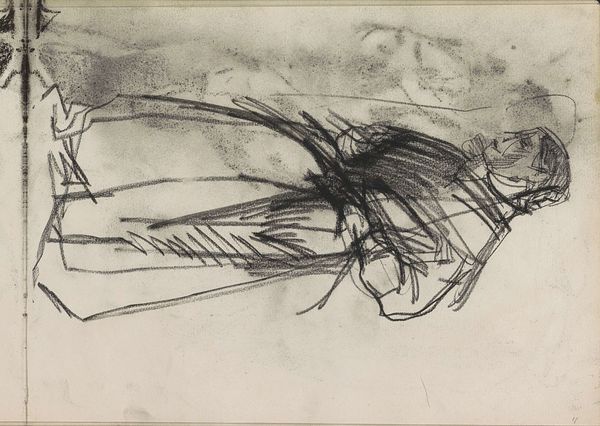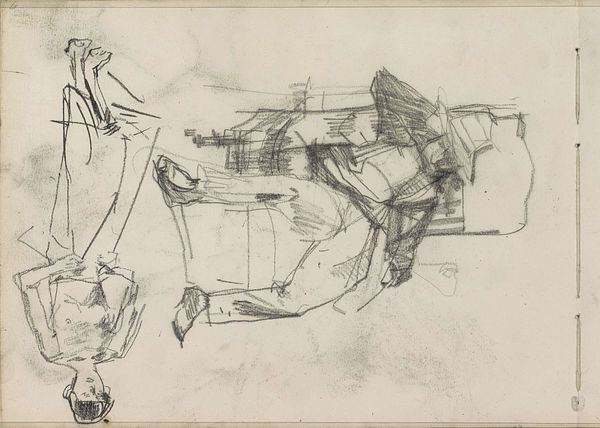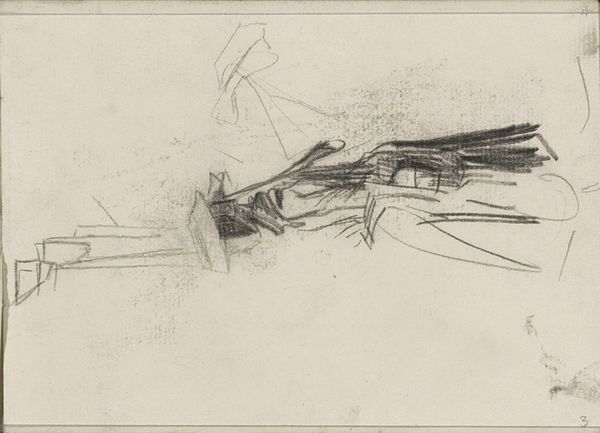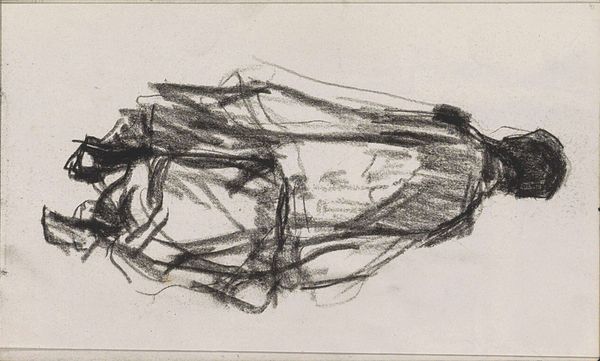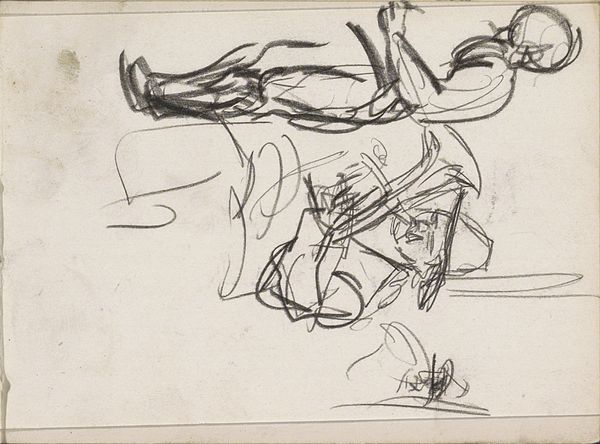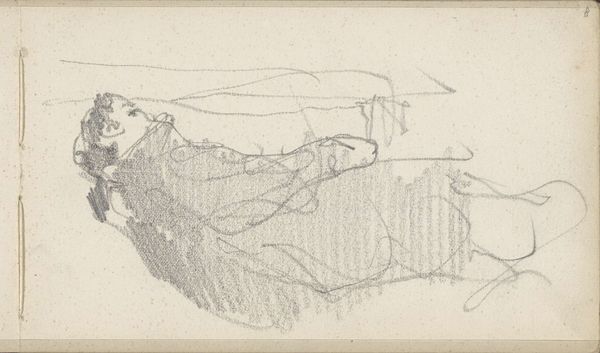
drawing, pencil
#
portrait
#
drawing
#
figuration
#
pencil
Copyright: Rijks Museum: Open Domain
Editor: So, this is Isaac Israels' "Standing Woman with Objects in Her Hands," a pencil drawing dated between 1875 and 1934, housed in the Rijksmuseum. It feels very gestural, capturing a fleeting moment. What strikes you about this sketch? Curator: The hurried nature, those confident pencil strokes… it speaks to a desire to capture something beyond mere physical representation. Consider the ‘objects in her hands’ – what are they, and why aren't they clearly defined? They almost act as symbols themselves, standing in for perhaps the burdens, responsibilities, or the very essence of womanhood in that era. Editor: That's interesting! I was focusing on the lack of detail, almost like a study. So you're saying the ambiguity is deliberate, turning everyday objects into symbols? Curator: Precisely. Israels is not simply depicting a woman; he’s exploring an idea of womanhood through her posture, her implied weight. The objects, whatever they may be, add layers of interpretation. Look at how the lines create a sense of movement, of instability almost. What feeling does this evoke? Editor: It's less a solid portrait and more a collection of impressions. Perhaps hinting at the transient nature of identity? The sketchiness suggests vulnerability, too. Curator: Vulnerability, yes! And notice how that vulnerability might connect with our cultural understanding of women and their societal roles during the late 19th and early 20th centuries. Could those objects also be a kind of defense, however flimsy? Editor: I hadn't considered that. Viewing it now, it feels like the incompleteness mirrors the incomplete narrative often imposed on women. I guess I expected something more finished, but the power is in what's *not* said. Curator: Absolutely. Israels provides a visual language that invites us to actively participate in constructing meaning. It reflects both a specific time, and its lasting reverberations through cultural memory. Editor: This makes me see the drawing less as a preliminary study, and more as a finished thought, with so many embedded layers. Thank you!
Comments
No comments
Be the first to comment and join the conversation on the ultimate creative platform.
